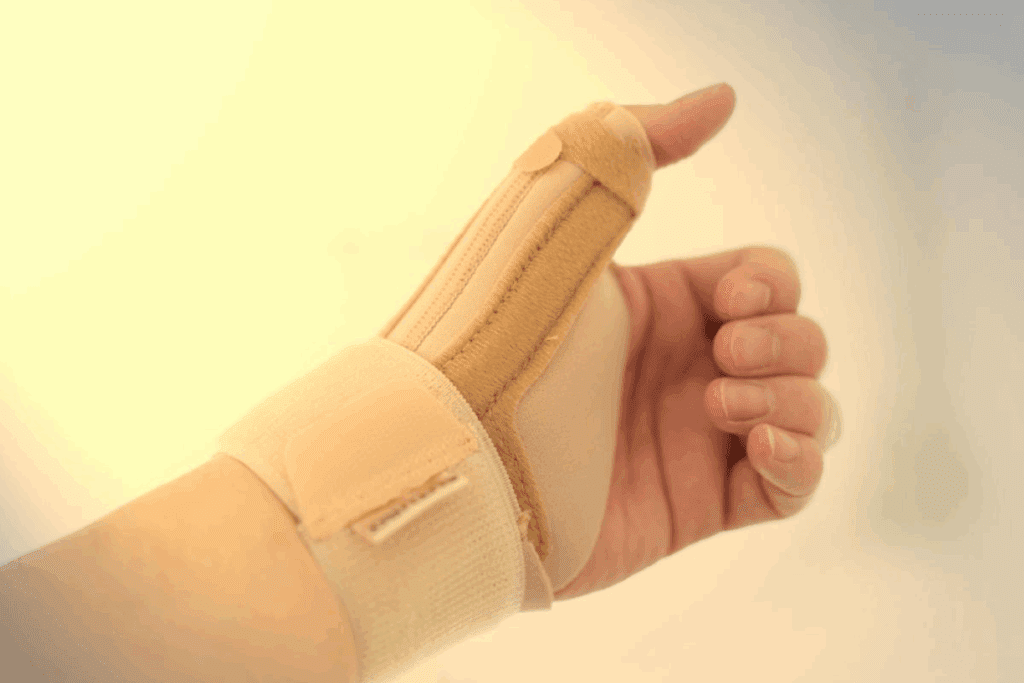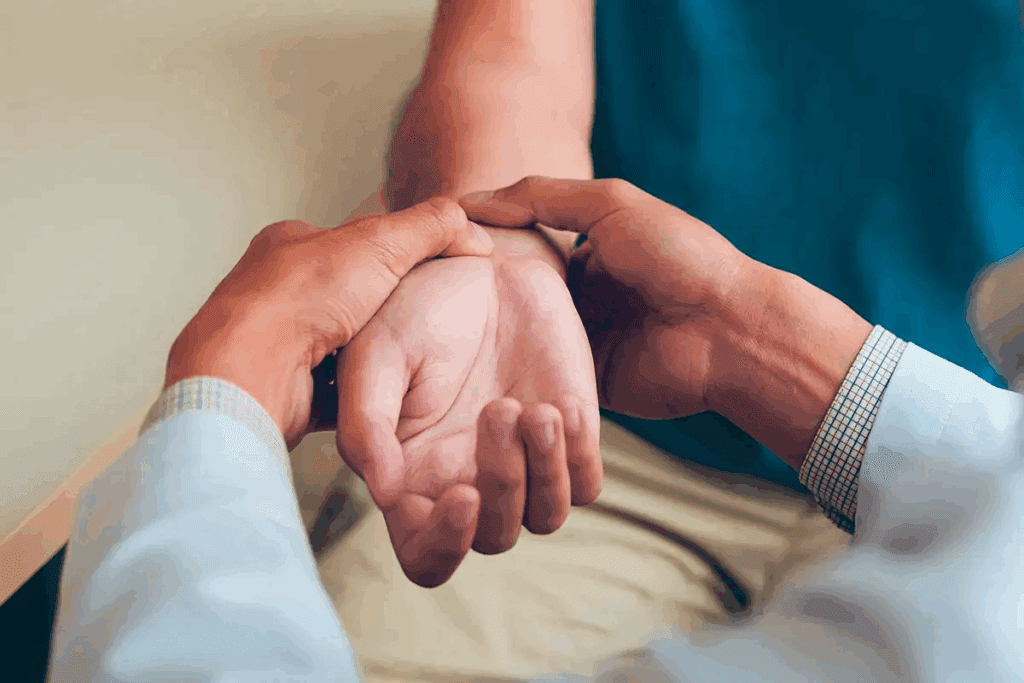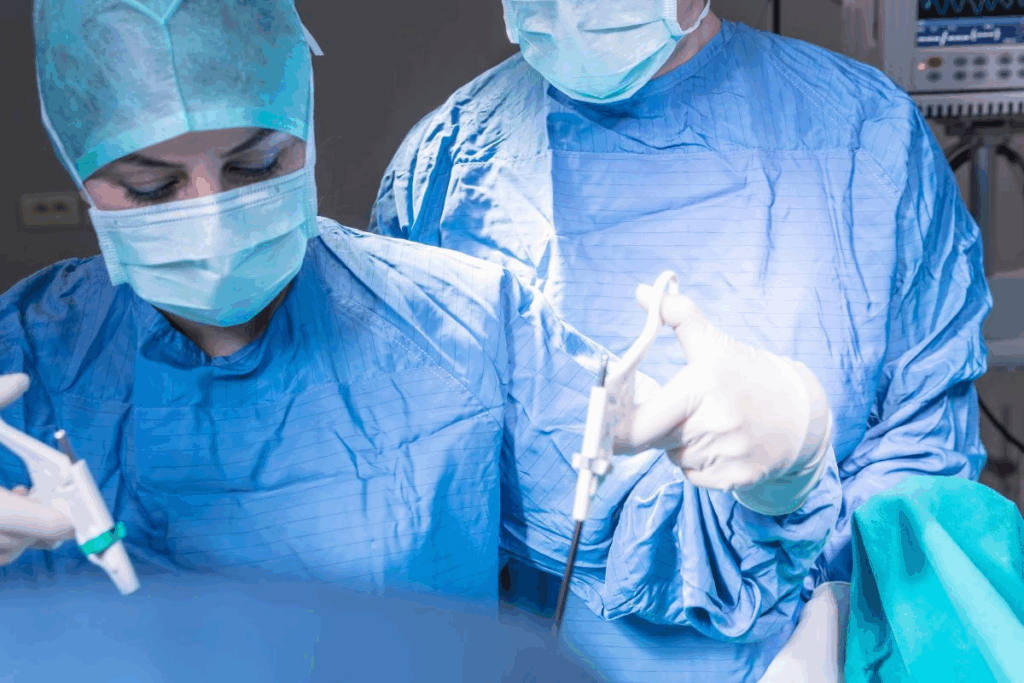Last Updated on November 4, 2025 by mcelik

Having carpal tunnel surgery is a big step to ease the pain and numbness of carpal tunnel syndrome. But, many patients worry about driving themselves home after the surgery. This worry is valid since the surgery affects the hand and wrist, key for driving.
Doctors usually tell patients not to drive for 1 to 2 weeks after carpal tunnel surgery. This advice is because of the pain or sensitivity in the first weeks. It can make driving unsafe. We’ll help you figure out when you can drive again and how to get around after surgery.

Carpal tunnel surgery is a procedure to help with carpal tunnel syndrome. It aims to ease pressure on the median nerve. This can help reduce symptoms.
There are two main types of carpal tunnel surgery. Open release involves a small cut in the wrist. It lets the surgeon cut the ligament pressing on the nerve. Endoscopic release uses a camera through a small incision. It causes less damage to the tissue.
Both methods have their benefits. The choice depends on the patient’s condition and the surgeon’s advice.
Carpal tunnel surgery is usually done under local anesthesia. This numbs the wrist area. The anesthesia’s effects on driving are important because they can affect hand function and reaction time.
The anesthesia’s impact on driving is significant. It can last for a few hours. Even after it wears off, it can still affect hand coordination and strength.
When considering driving after surgery, several factors are important. These include:
Understanding these points is key to knowing when it’s safe to drive again.

After carpal tunnel surgery, it’s not safe for you to drive yourself home. This is because your safety is at risk and there are dangers after surgery.
Patients after surgery might be on pain meds or anesthesia. This can make it hard to drive safely. The surgery can also cause numbness, weakness, or pain in the hand.
There’s also a small chance of nerve damage or infection. Driving could make these problems worse or lead to accidents if you suddenly feel pain or lose hand function.
Driving on pain meds or after surgery can lead to legal issues. If you’re in an accident, you might face questions about your ability to drive. Your regular car insurance might not cover you, leading to legal and financial problems.
Driving without care can be seen as negligent. This could affect your insurance claims or lead to legal trouble if you’re in an accident.
We recommend planning your ride home after surgery. Make sure you have a safe and reliable way to get home. This keeps you and others on the road safe.
Knowing what you can’t do right after carpal tunnel surgery is key to a good recovery. After surgery, you’ll face some physical limits that can affect your daily life, like driving.
Right after surgery, you might feel pain and swelling in your hand and arm. You could also notice numbness or tingling. These are normal symptoms that show you need to slow down.
Common physical limitations include:
These issues are temporary and part of healing. It’s crucial to follow your surgeon’s instructions for post-operative care to ensure a smooth recovery.
Managing pain well is crucial for recovery. Your doctor might give you pain meds to help with discomfort. But, some pain meds can make it hard to drive safely.
Some common effects of pain medication include:
It’s crucial to follow your surgeon’s instructions for post-operative care to ensure a smooth recovery.
Knowing the recovery time for carpal tunnel surgery is key for patients. It helps them plan their care after surgery. Everyone recovers differently, but there are common steps to follow for a smooth recovery.
The first few days are very important. Patients should rest and keep their hand up to reduce swelling. Managing pain is a top priority, and they might get medicine for it. It’s important to follow the doctor’s advice on medicine and activity.
In the first week, pain and swelling usually go down. Gentle exercises can help keep the hand flexible and prevent stiffness. Patients must follow their doctor’s advice on activity and wound care to avoid problems.
It’s crucial to follow your surgeon’s instructions for post-operative care to ensure a smooth recovery.
Usually, patients can start driving gently about two weeks after surgery. But, this can vary from a few days to two weeks, based on how quickly you recover and the surgery type.
After carpal tunnel surgery, many patients wonder when they can drive again. The answer isn’t simple. It depends on the surgery and how well you’re recovering.
Getting back to driving is a big step in recovery. But, it’s important to follow doctor’s orders for safety.
Doctors usually say wait until your hand and wrist are strong enough. You should be able to drive without pain. The time it takes can vary a lot based on the surgery and your health.
Most people can drive again in a few days to weeks. But, it really depends on the surgery and any complications.
Several things can affect when you can drive after surgery. These include:
It’s essential for patients to follow their surgeon’s specific advice regarding driving, as they can provide personalized guidance based on the patient’s condition and progress.
By understanding these factors and following medical guidance, patients can safely determine when to resume driving after carpal tunnel surgery.
Many people wonder if it’s okay to drive after carpal tunnel surgery with a splint or brace. These devices help support the wrist while it heals. We’ll look into the safety of driving with them and the legal side of things.
Driving with a splint or brace on your wrist might not be safe. It could limit your wrist’s movement and reaction time. This might make it harder to drive well.
Safety Tips:
The laws about driving with hand restrictions, like splints or braces, differ by place. Generally, if you can drive safely, you might be okay. But if your condition makes driving unsafe, you could be blamed if there’s an accident.
| Consideration | Legal Implication |
| It’s crucial to follow your surgeon’s instructions for post-operative care to ensure a smooth recovery. | If you can’t control the vehicle safely, you may be liable in case of an accident. |
| Local Laws and Regulations | Check with local authorities for specific laws regarding driving with hand restrictions. |
| Insurance Implications | Inform your insurance provider about your condition; failure to do so might void your policy. |
It’s wise to wait until your wound is fully healed and you’re comfortable driving without a splint or brace. Always talk to your healthcare provider for advice on driving after carpal tunnel surgery.
It’s crucial to follow your surgeon’s instructions for post-operative care to ensure a smooth recovery.
Where you had surgery affects your driving. If it was on your dominant hand, driving might be harder. This is because you need that hand for gripping the wheel and using controls.
If the surgery was on your non-dominant hand, you might get back to driving faster. This is because your dominant hand is still good. But, how easy it is to drive depends on your dexterity and the car’s demands.
The car’s transmission type is also key. Driving a manual transmission car is harder after surgery, especially if it was on your dominant hand. This is because it needs more hand and foot work.
But, automatic transmission cars are easier. They don’t need you to shift gears, making driving after surgery simpler.
Whether you had single or bilateral carpal tunnel surgery affects your recovery and driving. Bilateral surgery, where both hands are operated on at once, takes longer to recover from. It also makes driving harder.
Those who had surgery on just one hand might recover faster. They could get back to driving sooner, depending on the factors mentioned.
It’s crucial to follow your surgeon’s instructions for post-operative care to ensure a smooth recovery.
Before driving, you need to have enough hand strength and function. You should be able to hold the steering wheel tightly, use the gearshift, and press the pedals without pain. Full range of motion in your wrist and fingers is crucial for safe driving.
Being able to react fast to driving situations is also important. This means you can make quick turns or stop the car when needed. Doing simple exercises like gripping and releasing a soft ball or doing wrist extensions can help check your recovery.
To make sure you’re ready to drive, try some self-assessment tests. First, practice driving in an empty car park. This lets you test your reaction time and control without the dangers of busy traffic.
For a more detailed check, follow these steps:
For more details on what you can and can’t do after carpal tunnel surgery, visit for detailed advice.
Driving after carpal tunnel surgery needs a careful and slow approach. We know getting back behind the wheel is a big step in your healing. We’ll show you how to drive safely again.
Start by driving in a safe place. Begin with short trips in areas you know well. Avoid busy roads and tricky routes. This slow start helps your body get used to driving again.
Make sure to stop and stretch every 20-30 minutes. This helps prevent stiffness and pain. Also, don’t drive for too long, as it can hurt your wrists and hands.
Changing your car’s settings can make driving more comfortable. Make sure your seat lets you reach the pedals easily without straining. You might also want to use a steering wheel cover or grip to ease hand strain.
| Comfort Adjustment | Description | Benefit |
| Seat Adjustment | Position your seat to comfortably reach the pedals | Reduces strain on wrists and hands |
| Steering Wheel Cover | Use a cover or grip to ease steering | Decreases discomfort and fatigue |
| Regular Breaks | Stop every 20-30 minutes to stretch | Prevents stiffness and promotes circulation |
By making these changes and driving slowly back, you can lessen discomfort and risks. Always put your safety and the safety of others first.
Planning your ride home after carpal tunnel surgery is key to a smooth recovery. You might not be able to drive right away. So, having a plan for getting home is crucial.
Getting a family member or friend to drive you home is a great idea. It’s comforting to have someone you trust by your side. They can also help with other things during your recovery.
Make sure to check if your friend or family member is available and willing to help. They might need to stick around for a few days, depending on how you’re feeling.
If you can’t count on friends or family, public transport or rideshare services are good alternatives. Many cities have reliable public transport that can take you home safely.
Rideshare services offer a door-to-door ride. Booking ahead is a good idea, especially if you’re having surgery during busy times.
If you need extra medical care during your ride, there are services for that. These services are set up to handle your post-surgery needs while you’re in transit.
To help you understand your options better, we’ve made a comparison table:
| Transportation Option | Cost | Convenience Level | Additional Support |
| Family/Friend | Free | High | Emotional Support |
| Public Transportation | Variable | Medium | Limited |
| Rideshare Services | Variable | High | Limited |
| Medical Transportation | Higher | High | Medical Support |
By planning ahead and picking the best option, you can make your journey home after surgery easy and stress-free.
Before your carpal tunnel surgery, it’s key to plan for your recovery. This ensures your safety and comfort. Planning ahead can lower stress and prevent complications, helping you recover better.
Getting someone to drive you home after surgery is crucial. Anesthesia and the surgery make driving unsafe. Ask a family member or friend to help. If not possible, use a professional service for post-surgery patients.
Having someone stay with you for 24 hours after surgery is wise. It adds safety and support during your recovery.
Preparing your home is vital for recovery. This includes:
By doing these things, you make your home safe and supportive. This helps your recovery from carpal tunnel surgery go smoothly.
The type of carpal tunnel surgery you get affects your recovery. Knowing the differences helps you prepare and make smart choices for your care after surgery.
Endoscopic surgery usually means a quicker recovery than open surgery. Patients often feel less pain and can get back to normal faster. This is because endoscopic surgery causes less damage and has smaller cuts.
Open surgery, however, has a bigger cut and more damage, which can make recovery longer. Still, both methods have their right times and reasons, based on how bad your condition is and what your doctor suggests.
“The advantages of endoscopic surgery include less pain, faster recovery, and earlier return to work and sports,” highlighting the benefits that patients can expect from this less invasive approach.
Driving again can take different times after endoscopic and open surgeries. People who have endoscopic surgery might drive sooner because they feel less pain and discomfort. They can get back to driving when they have the strength and mobility needed.
But, open surgery might keep you from driving for longer. You might feel more pain and need more time to get back to driving.
It’s crucial to follow your surgeon’s instructions for post-operative care to ensure a smooth recovery.
It’s crucial to follow your surgeon’s instructions for post-operative care to ensure a smooth recovery.
There are clear signs you shouldn’t drive after carpal tunnel surgery. These include:
It’s crucial to follow your surgeon’s instructions for post-operative care to ensure a smooth recovery.
By asking these questions and following your doctor’s advice, you can ensure a safe and smooth recovery. It’s always better to err on the side of caution when it comes to driving after surgery.
It’s crucial to follow your surgeon’s instructions for post-operative care to ensure a smooth recovery.
Driving after surgery is all about waiting until your hands are strong enough. You should also stop taking strong pain meds. Your doctor will give you specific advice based on your surgery and how you’re healing.
By sticking to these rules and knowing your limits, you can drive safely again. It’s a good idea to check if you’re ready to drive and ease back into it slowly.
Driving safely is the main goal after surgery. We’re here to help you get back on the road safely. We’re committed to supporting your recovery and making sure you feel confident.
No, it’s not safe to drive yourself home after carpal tunnel surgery. This is because of the anesthesia, pain meds, and physical limits.
Recovery time for carpal tunnel surgery varies. Most people recover in a few weeks. You’ll see big improvements in 2-4 weeks.
Driving with a splint or brace might be okay, but it depends. It’s about the splint type, your comfort, and driving skills. Always check with your doctor first.
Several things can affect your driving after surgery. These include the surgery type, hand involved, vehicle type, and if you had surgery on both hands.
You’re ready to drive when your hand function is back. You should be able to drive safely and not be on pain meds.
If you’re not ready to drive, watch for signs. Look for numbness, limited motion, pain while driving, or meds that affect driving.
Endoscopic surgery recovery is usually quicker than open surgery. Still, wait until your doctor says you’re ready. Make sure you can drive safely and comfortably.
You can use family, public transport, or rideshare services. Medical transport is also an option during recovery.
Plan ahead by arranging transport and setting up your home. Follow your doctor’s post-op care instructions closely.
Ask your surgeon about driving guidelines, recovery concerns, and when you can drive safely. This will help you plan better.
References
Subscribe to our e-newsletter to stay informed about the latest innovations in the world of health and exclusive offers!